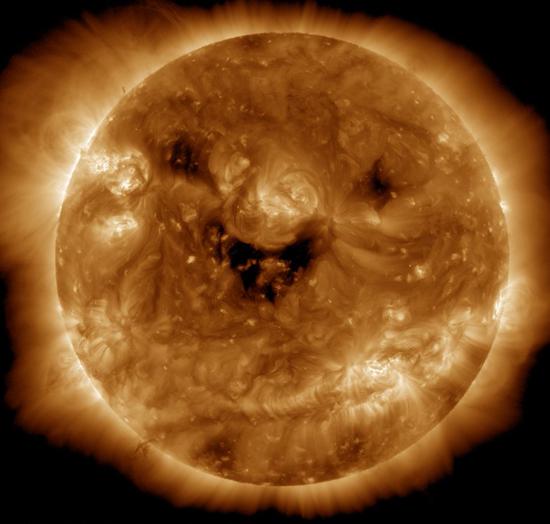(ECNS) -- Asked on Aug. 3 about US House Speaker Nancy Pelosi’s visit to Taiwan, United Nations Secretary-General Antonio Guterres asserted: “Our position is clear. We abide by the resolutions of the UN General Assembly and the one-China principle, on which all of what we do are based.” A day earlier, Stéphane Dujarric, spokesman for the Secretary-General, told journalists that the UN’s policy was guided by the 1971 UN General Assembly Resolution 2758 on the One-China principle.
On Oct. 25, 1971, the Plenary Meeting of the United Nations General Assembly adopted by a large margin the resolution “Restoration of the lawful rights of the People’s Republic of China (PRC) in the United Nations,” namely Resolution 2758. It states: “Recognizing that the representatives of the Government of the PRC are the only lawful representatives of China to the UN and that the PRC is one of the five permanent members of the United Nations Security Council; Deciding to restore all its rights to the PRC and to recognize the representatives of its Government as the only legitimate representatives of China to the UN, and to expel forthwith the representatives of Chiang Kai-shek from the place which they unlawfully occupy at the UN and in all the organizations related to it.” In the name of the UN, the resolution affirmed the principle that there is but one China in the world, that Taiwan is a part of China, and that the Government of the PRC is the only lawful government representing the whole China.
Now the resolution has been distorted by Taiwan independence-seekers who contend that the resolution does not rule that Taiwan is a part of the PRC, nor does it grant the PRC the right to represent Taiwan or the people of Taiwan in the UN and its related organizations. They even say the Resolution 2758 is illegal and therefore invalid. In March 2022, funded by the Taiwan Democratic Progressive Party, think tank researchers Bonnie Glaser (Ge Laiyi) and Jessica Drun (Zhuang Wanhua) released a report saying that Resolution 2758 did not confirm the one-China principle, echoing the previous arguments of Taiwan independence activists.
In fact, a brief review of historical facts and international law confirming them reveals that none of these distortions of Resolution 2758 are valid.
1. There is a concrete factual and legal basis to prove that Taiwan is part of China.
First, it is not only a fact that Taiwan belongs to China, but also confirmed by international treaties and recognized by the international community. China was forced to cede Taiwan to Japan after its defeat in the First Sino-Japanese War (1894-95). In 1943, the Cairo Declaration by China, the United States and the United Kingdom declared the purposes of the three countries: to restore to the Republic of China the territories Japan had stolen from China, including Manchuria, Formosa (Taiwan) and the Pescadores. In 1945, China, the United States and the United Kingdom issued the Potsdam Proclamation, reaffirming that the conditions of the Cairo Declaration must be implemented. That same year, Japan accepted the terms of the Potsdam Proclamation in the Instrument of Unconditional Surrender. Police Commander Chen Yi accepted the Japanese surrender in Taipei and announced: “From today on, Taiwan and the Pescadores Islands reappear on the map of China. All the people of these areas have been placed under the national government of the Republic of China’s sovereignty. Based on such significant historic facts, I report to my Chinese compatriots and the world that Taiwan is now part of China again.” Since then, China has regained sovereignty over Taiwan, a status that has not changed ever since.
Second, the defeat of the US “two representation” proposal to split China is a reaffirmation by the international community that Taiwan is an inalienable part of China.
To prevent the restoration of new China’s legitimate rights, the United States once put forward the so-called “two representation” proposal to affirm the representation of the People’s Republic of China in the UNGA and the UNSC, and to affirm the continued representation of the Republic of China.
The essence of the “two representation” proposal is to create “two Chinas” or “one China, one Taiwan,” splitting China. Representative countries aside from the US were well aware of its illegality. At that time, the Soviet representatives said, “The wrongly played tactics of ‘two Chinas’ and ‘dual representation of China’ at the UN . . . are to forcibly take Taiwan away from the PRC.” The Pakistani representatives said the proposal violated the principle of territorial integrity enshrined in the Charter and sought to give the UN a right not granted to it by its charter: the right to create a country. In the end, the proposal fell apart as it ran afoul of the adopted Resolution 2758.
2.Reasons for the little mention of the word "Taiwan" in the Resolution 2758.
The Ge-Zhuang report alleges that Resolution 2758 does not contain the word “Taiwan,” nor does it define the composition of China.
Resolution 2758 addresses the question of who should represent a complete China at the UN. As a founding member of the UN and a permanent member of the Security Council, it says, China should suffer no vicissitude in terms of this status with the change of regime. The change lies in who will represent China. Since the founding of the PRC, its government has been exercising its rights at the UN on China’s behalf. However, as of Oct, 25, 1971, China’s seat in the UN was illegally occupied by Chiang Kai-shek’s representatives. Resolution 2758’s use of such words as “restoration” and “illegal occupation” also proves that China’s rights have always existed and should have been exercised throughout by the government of the PRC.
There is a clear, strong consensus of both what China calls its Nationalist Party and the Communist Party that both Taiwan and the mainland belong to one China and Taiwan is part of China. On the eve of the Resolution 2758’s adoption, the PRC made a statement: “As long as there are “two Chinas,” “one China, one Taiwan” or other similar statements in the UN, the Government of the PRC will resolutely not have any contact with the United Nations.” On the day of the vote, Chiang Kai-shek’s representative said, “Other countries have been stressing the fact that Taiwan is Chinese territory. I can't agree with them more.” Therefore, all Chinese people have no objection to the fact that Taiwan is a part of China, and there is absolutely no need for the UN resolution to specifically mention “Taiwan.”
3. The process by which Resolution 2758 was adopted broke no law.
Regarding China's representation at the UN, the United States put forward the so-called “important issue” proposal, saying this representation issue was important under Article 18 of the UN Charter, which requires the approval of a two-thirds majority of the member states present and voting. In fact, the “important issue” refers to the accession of new Members, the expulsion of Members, the cessation of the rights and privileges of Members, etc. It does not include the question of representation, which requires only a simple majority in favor. In the meantime, Malaysia’s representatives advocated that the question before the General Assembly was neither the admission of a new member nor the expulsion of an existing one. China was a founding member of UN and has always been a member. So the problem was the question of representation – that is, who should hold China’s seat at the UN. The ulterior motive of the United States is only to complicate the voting process and create obstacles to restoring new China’s legal rights.
On the day of the vote, the US representatives asked for priority votes on the “important issue,” which was approved by the General Assembly’s president Adam Malik. Consequently, the proposal was defeated 59 to 55. This means that restoring the legal rights of the new China does not belong to the category of “important issue.” In other words, it needs only a simple majority in favor to pass.
After the US trick was thwarted, the General Assembly president announced a vote on Draft Resolution 2758. At this time, the United States tried to propose amendments to the draft, which the president rejected in accordance with the rules of procedure. Instead of letting the procedure go smoothly, the US proposed a separate vote on the final paragraph --- “the expulsion of Chiang Kai-shek’s representatives”. Some countries pointed out that the restoration of the PRC’s legitimate rights at the UN and the expulsion of the Chiang Kai-shek clique were two sides of the same issue and there was no reason to divide them into two separate issues. However, the president still declared a vote on the US “separate vote” motion, which was once again rejected, 61 to 51. Eventually, the US had no more tricks to play.
Draft Resolution 2758 was finally put to a vote and adopted by a large majority: 76 votes in favor, 35 against and 17 abstentions, exceeding not only the half in favor but also the two-thirds majority required to vote on “important issue.”
Therefore, the adoption of Resolution 2758 is legal and effective. Those alleging that the procedure broke the law are talking nonsense.
4. The United States is reneging on the one-China principle.
In 1972, the United States recognized in the Sino-US Shanghai Communique that all the Chinese on both sides of the Taiwan Strait believed that there was but one China and that Taiwan was part of China. The US government made no objection to this. Paragraph 2 of the 1979 Communique on the Establishment of Diplomatic Relations between China and the United States further clarified that the United States viewed the government of the PRC as the only lawful government of China. In this context, the people of the United States would maintain cultural, commercial and other unofficial exchanges with the people of Taiwan. In 1982, China and the United States issued the Aug. 17 Communique to resolve the issue of US arms sales to Taiwan. The US government reiterated that the United States had no intention of violating China's sovereignty and territorial integrity, interfering in China's internal affairs, or implementing the “two Chinas” or “one China, one Taiwan” policy.
Promising in words but defaulting in practice, the US enacted the 1979 Taiwan Relations Act and put forward “six guarantees” for Taiwan. In recent years, the US further enacted a series of Taiwan-related laws, increased its arms sales to Taiwan and and won international position for Taiwan, constantly hollowing out its commitment to one China.
The Ge-Zhuang report bluntly stated that the vote to restore China’s lawful seat in the UN was delayed because of the United States, and the number of countries voting for it was lowered through “important issue” proposal and other means. As occasion serves, US diplomats publicly and privately resist various UN statements claiming Taiwan as a province of China. They even abet Taiwan’s participation in the UN and other international organizations.
In the face of facts, however, any excuse is futile. Resolution 2758 settled once and for all the question of China’s representation at the UN and affirmed the one-China principle in the name of the UN. Taking international law and its international commitments as nothing important, the US has continuously fanned the flames of “Taiwan independence” and severely violated China’s sovereignty and territorial integrity. This is another clear proof of its deliberate sabotage of the international order. Hence, China has the right to take all necessary measures in response.


















































 京公网安备 11010202009201号
京公网安备 11010202009201号